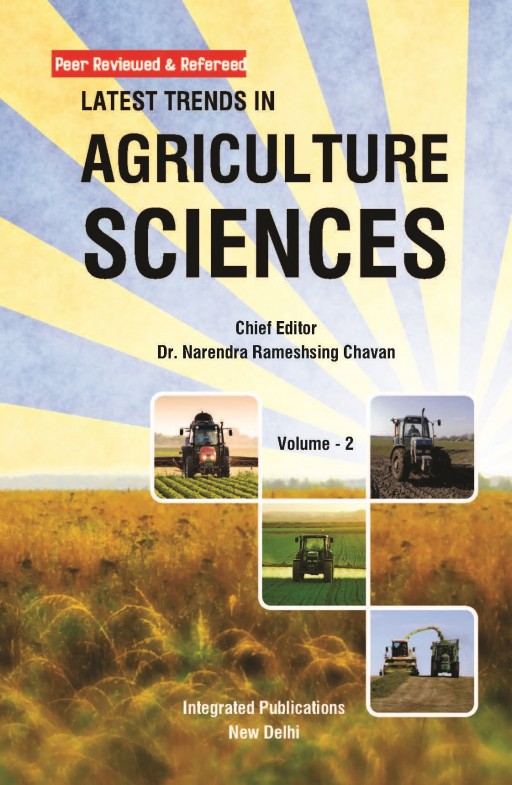Evaluation of Biochar under Cotton-Maize Cropping System


Field experiments were conducted at ICAR-Central Institute for Cotton Research, Regional Station, Coimbatore in cotton-maize cropping system during 2017-18 and 2018-19 to evaluate the influence of different source of biochar at varied levels on growth and yield of cotton and its residual effect on succeeding maize crop. The experiment was laid out in Randomized Block Design (RBD) with 11 treatments and three replications. The treatments involve three doses of maize biochar (MB), cotton biochar (CB) and prosopis biochar (PB) @ 2.0 t ha-1 (2T), 3.0 t ha-1 (3T) and 4.0 t ha-1 (4T), respectively besides a control and Farm Yard Manure @ 12.5 t ha-1. The recommended doses of fertilizers were applied to all the plots irrespective of treatments to both cotton and maize crops. Biochar was incorporated as per the treatments into different plots to cotton crop only. The cotton variety Suraj and maize hybrid CO(H)M 6 were used for conduct of experiment. The biochar utilized for conduct of experiment exhibited varied physical and chemical properties. Biochar recovery from the biomass was higher in PB than CB and MB. It also recorded higher bulk density, particle density, pore space, pH, EC, CEC and organic carbon along with secondary nutrients. The total nitrogen and potassium were higher in CB. The SEM image of PB indicated larger pore space and size compared to CB and MB. Presence of nutrients such as carbon, boron, nitrogen, calcium and potassium on the surface of biochar were confirmed by EDAX report. The release pattern of nitrogen, phosphorus, potassium and organic carbon significantly varied with doses and sources of biochar during incubation of 70 days. The pots amended at the rate of PB 4T and CB 4T showed slow release of N at initial phase and it was higher at fag end of incubation over control. The P and K availability were increased throughout the duration of incubation in biochar treatments whereas in the control it was reduced. Substantial increase in organic carbon content was noted in PB 4T and CB 4T amended treatments over control. In general, the availability decreased in all the treatments at the end of incubation period. Application of biochar distinctly influenced growth traits and root parameters. It was higher with PB 4T + RDF and CB 4 T + RDF while these parameters were substantially reduced under control. The yield contributing parameters were substantially higher with addition of PB 4T + RDF and CB 4T + RDF and these resulted in significantly higher seed cotton yield and stalk yield than control and other treatments. The cotton quality characters such as ginning percentage, seed index, fibre length, fibre strength, elongation and uniformity were not much affected by the treatments. The increased uptake of nitrogen, phosphorus and potassium were observed with PB 4T + RDF and CB 4T + RDF treated plots. The availability of N, P and K after harvest of cotton were also significantly higher in these plots. Soil physical properties were not significant over biochar application and chemical properties such as EC, OC and CEC were differed significantly and higher values noted with PB 4T + RDF and CB 4T + RDF over control and MB 2T + RDF. Microbial population and its enzyme activities were also increased substantially with above biochar treated plots. Residual effect of biochar on succeeding maize showed significant influence on plant growth and root parameters under PB 3T + RDF, PB 4T + RDF, CB 4T + RDF and FYM 12.5T + RDF over control. The yield and yield contributing parameters were also significantly higher in these biochar and FYM treatment over control. Apart from this, the nutrient uptake, chemical and biological properties of the soil were also superior in the above biochar treatment. In the cotton-maize cropping system as a whole, PB 4T + RDF recorded higher gross and net returns and it was followed by CB 4T + RDF. However, the BCR was the highest with 2.72 in CB 4T + RDF followed by PB 4T + RDF with BCR of 2.63. Based on the experimental results it may be concluded that incorporation of PB 4T + RDF and CB 4T + RDF significantly influenced plant growth, yield components and yield of cotton. In succeeding maize crop PB 4T + RDF and PB 3T + RDF had remarkable impact on growth, yield attributes and yield. This was followed by comparable performance of FYM 12.5T + RDF and CB 4T + RDF. Biochar improved soil health and fertility with increasing doses by influencing soil physical, chemical and biological properties. Though PB at higher doses of 4T as well 3T performed better in combination with RDF in terms of yield and returns, the CB at 4T + RDF registered higher B:C ratio. Hence, in view of availability and cost, CB 4T + RDF combination was found to be economically beneficial.